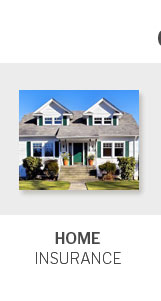 |
 |
 |
|---|
 |
 |
 |
 |
|---|
 |
 |
 |
 |
 |
 |
|---|

Understanding Homeowners Insurance Costs: A Comprehensive GuideThe world of homeowners insurance can be both intricate and bewildering, especially when it comes to understanding the costs associated with it. In a society where financial planning is paramount, grasping the nuances of insurance costs is essential for both first-time homebuyers and seasoned homeowners alike. The cost of homeowners insurance is influenced by a myriad of factors, each playing a significant role in determining how much you'll pay for peace of mind. Firstly, the location of your home is a critical determinant. For instance, homes located in areas prone to natural disasters such as hurricanes, floods, or earthquakes are likely to incur higher insurance premiums. This is simply because the risk of damage is significantly greater. Take, for example, a quaint beach house along the Florida coastline; while its picturesque location offers stunning views and a serene lifestyle, it also comes with a heightened risk of hurricane damage, subsequently inflating insurance costs. Another key factor is the age and condition of the home. Older homes or those in need of significant repairs might attract higher premiums due to the increased likelihood of claims. Conversely, modern homes built with robust materials and equipped with the latest safety features often enjoy lower insurance costs. Imagine owning a sleek, newly constructed home with a state-of-the-art security system; not only does it provide a sense of safety, but it could also lead to substantial savings on your insurance policy. Personal factors also come into play. A homeowner's credit score, claims history, and even the presence of certain amenities like swimming pools or trampolines can impact the cost. A stellar credit score often signals financial responsibility, potentially leading to more favorable insurance rates. Meanwhile, properties with high-risk features might see an uptick in premiums due to the increased potential for accidents. To truly understand homeowners insurance costs, one must also consider the level of coverage desired. Basic policies that cover the structure of the home might be less expensive, but they offer limited protection. More comprehensive policies that include personal property, liability, and additional living expenses in the event of a disaster naturally come with higher premiums. It's a delicate balance between adequate coverage and affordability. One could argue that insurance is a reflection of one's appetite for risk management. While some may opt for minimal coverage to save on monthly expenses, others might prioritize extensive coverage to safeguard their assets against unforeseen calamities. In today's unpredictable climate, where the unexpected can occur at any moment, having a robust insurance policy can be a wise decision. To navigate this complex landscape, many homeowners turn to insurance agents or brokers who can offer tailored advice based on individual needs and circumstances. Moreover, regularly reviewing and adjusting one's policy can lead to cost savings, ensuring that the coverage remains relevant and cost-effective as time progresses. In conclusion, while the cost of homeowners insurance may seem daunting, understanding the factors that influence it can empower homeowners to make informed decisions. By evaluating their specific needs, assessing potential risks, and seeking professional guidance, homeowners can secure a policy that not only protects their most significant investment but also offers peace of mind in an ever-changing world. https://www.nerdwallet.com/article/insurance/average-homeowners-insurance-cost
The average cost of homeowners insurance in the U.S. is about $1,915 a year for $300,000 worth of dwelling coverage, but rates vary by state ... https://www.libertymutual.com/property/homeowners-insurance/home-insurance-calculator
Let's get started. Where you live can impact recommended coverages and cost of your homeowners insurance policy. https://www.valuepenguin.com/average-cost-of-homeowners-insurance
Average Cost of Homeowners Insurance (2025) ... The average cost of home insurance in the United States is $2,151 per year, or $179 per month.
|
|---|